#mattia giordano
Text

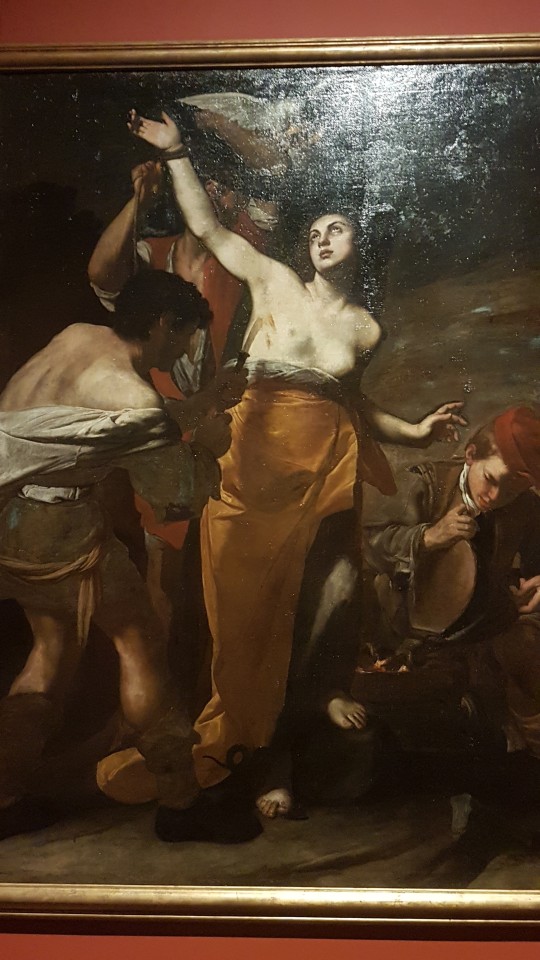

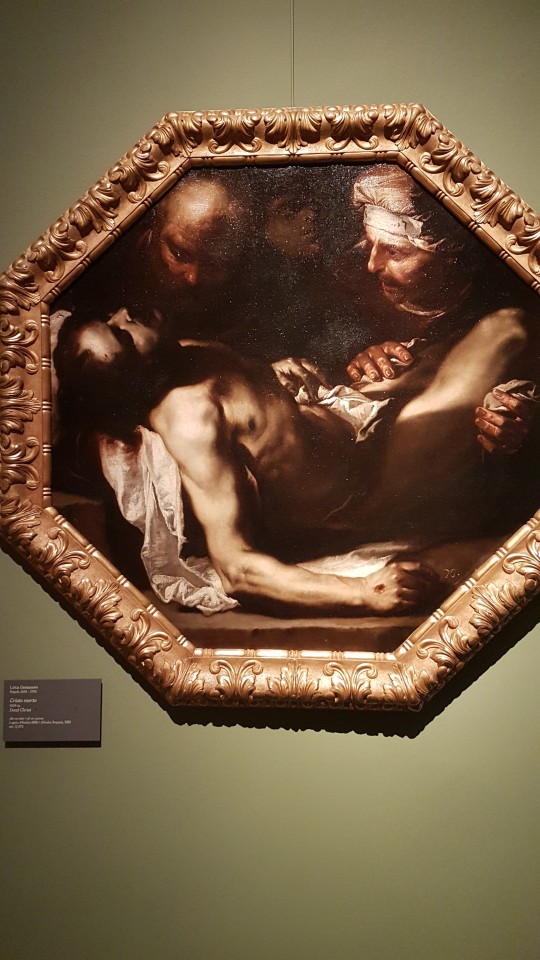

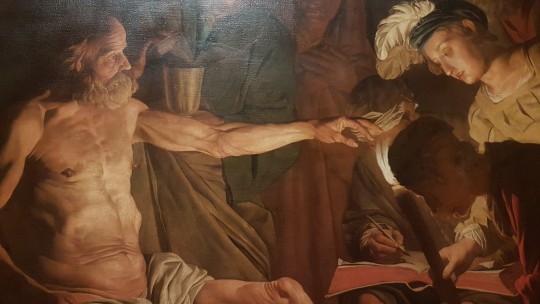
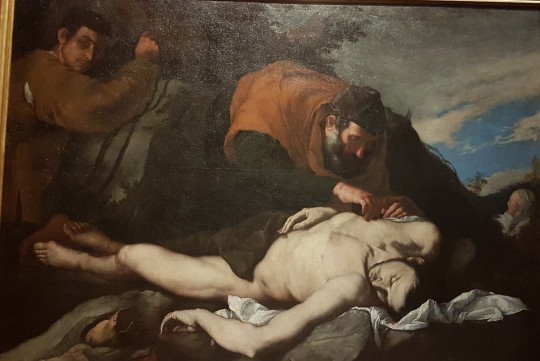
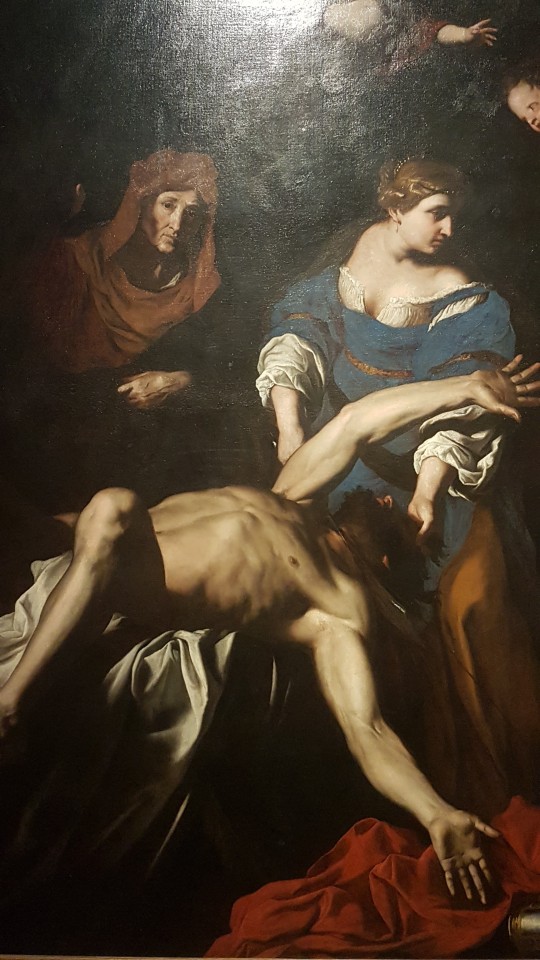


Capodimonte Museum - Naples, Italy
#Capodimonte#Real Sito di Caodimonte#Museo di Capodimonte#Napoli#Naples#Luca Giordano#Mattia Preti#Pietro Novelli#art#art history#18th century#paintings#pittura#scultura#Regno di Napoli
23 notes
·
View notes
Text

Well, another day, another way the National Hockey League has found to disappoint me. At this rate I'm no longer even surprised. Just sad. Very very sad.
ANYWAYS, for those interested, and looking for some bright spots today, here is a by no means comphrensive list of NHL players who have been actively vocal and demonstrative in their support of the LGBTQA+ community, who have attended Pride parades, or in other ways have proven to at least try to be allies. Some might surpise you. They did me as I looked into this (Brad Marchand? Mark Schiefle? yes!) (I'd rather focus the energy on these guys than those who don't deserve my time, fandom, or money for their apparel):
Quinn Hughes
Oliver Ekman-Larsson
Jon Merrill
JT Miller
Jacob Markstrom
MacKenzie Weegar
Jonathan Huberdeau
Rasmus Andersson
Alexander Wennberg
Roman Josi
Jack Hughes
Timo Meier
Matthew Tkachuck
Aaron Ekblad
Charlie MacAvoy
Morgan Rielly
John Klingberg (literally had a video on learning how to be an ally in the dressing room, if you didnt know)
Josh Morrissey
Mark Schiefle
Dylan Demelo
Mat Barzal
Tyler Seguin
Mitch Marner
Erik Johnson
Nathan MacKinnon
Connor McDavid
Anthony Duclair
Gabriel Landeskog
Auston Matthews
Tyson Barrie
Kurtis Gabriel
Travis Konecny
James Van Riemsdyk
Scott Laughton
Jordan Martinook
Bo Horvat
Luke Prokop
Brad Marchand
Sean Monahan
Johnny Gaudreau
Mark Giordano
Max Domi
Martin Necas
Ethan Bear
Jeff Skinner
Mattias Samuelsson
#nhl#nhl hockey#nhl players#nhlpride pride#quinn hughes#vancouver canucks#short king#captainquinton#captain quinn hughes#thats my captain
104 notes
·
View notes
Text
Per la prima volta, avvertì tutto lo spazio che li separava come una distanza ridicola. Era sicura che lui si trovasse ancora là, dove gli aveva scritto alcune volte, molti anni prima. Se lui si fosse spostato, lei l’avrebbe percepito in qualche modo. Perché lei e Mattia erano uniti da un filo elastico e invisibile, sepolto sotto un mucchio di cose di poca importanza, un filo che poteva esistere soltanto fra due come loro: due che avevano riconosciuto la propria solitudine l'uno nell'altra.
Paolo Giordano – La solitudine dei numeri primi
Ph Hideho Akihisa
6 notes
·
View notes
Photo


Saint Sebastian, oil on canvas, by Mattia Preti, c. 1656
Photos by Charles Reeza at the Museo di Capodimonte, Naples
The Dominican nuns who commissioned this painting rejected it on the advice of another artist, Luca Giordano, who said it was “course and lacking in nobility.”
#fine art#oil painting#17th century art#Italian artist#Napoli#Italy#martyr#homoerotic art#st sebastian
61 notes
·
View notes
Text
Reflections on a Year of Reading Italian Literature
Books read this year:
- The Solitude of Prime Numbers by Paolo Giordano
- Under the Tuscan Sun by Frances Mayes (pgs 1 through 200)
From Reading these two books, I have learned quite a bit about the Italian Geography. Obviously, Italy is a very beautiful place to visit but it has so much more to offer than seen with the naked eye. For an example, in the book “The Solitude of Prime Numbers”, Alice was on a skiing trip with her father along the Italian mountains, and it was very cold. Not to mention she had a terrible skiing accident, she told her father she needed to use the restroom before going up the mountain but he didn’t listen. With this event happening, I have learned that Italy is not only a hot summer country, but can also be a scenic, and different place. I have learned that Italy has other sides to it like big mountains that then have snow. This is something new to hear. In the book “Under the Tuscan Sun”, Frances and Ed spend a summer traveling the Tuscan countryside, buying wines and touring old tombs. And in the winter time, they collect oil from their olive trees. I have learned that Italy is a very touristic country and is full of amazing things to do and see. It is known as a very romantic place to go with a partner and this tells us that because going along the countryside and buying wine is one of the most romantic things a couple can do. Isn’t it?
From Reading these two books, I have also learned a lot about Italy’s history. In the book “The Solitude of Prime Numbers”, Alice and Mattia are bestfriends and have a unexplainable connection with one another. The kind thats only one in a lifetime, if that. Towards the end of the book, Alice is having a very rough patch with her husband, Fabio, and She finds herself in her living room with Mattia kissing. In that moment, she realized that her feelings for Mattia were always real and weren’t just a fantasy in her head. I have learned that Italy’s history is connected to Romance. I know this because one of the cities in Italy is Venice. And Venice is classified as “The City of Love”. Italy has a long line of photographic views, beautiful sunsets, and full of color. Like Happiness. Something big and yet so beautiful. In the book “Under the Tuscan Sun”, a professor of creative writing, Frances, who takes her divorce settlement and buys an abandoned villa in Tuscany. She gets her now husband, Ed, to help her completely remodel the villa for their own little place together. I learned that Italy wasn’t always the modern place it is now. Rome was found at least 800,000 years ago and the history goes way back to BC. Which was then called Italy from the Roman Republic.
From Reading these two books, I lastly learned about The Italian Culture. Now in Present time, Italians are very big on family, tradition and loyalty. Back then, Italy didn’t have much culture. It was mostly known for their exotic foods and different language. In the book “The Solitude of Prime Numbers”, its about love and friendship. Alice and Mattia were friends since middle school and they were both twin flames. They were both lonely, broken and were there for each other. They are one anothers person, but more love over friendship. I learned that Italy’s culture is Love. Its what its known for, and its beautiful and extensive history. In the book “Under the Tuscan Sun”, Its about Frances who was hurt, starts a totally new life from scratch and finds a way to live again. I learned that Italy’s culture is also about finding yourself. I know this because this story is all about rebirth and transformation.
In all of my time of reading these two books, I have learned a lot of life lessons. In the book “The Solitude of Prime Numbers”, I have learned to never let what you truly feel go unsaid. It may become too late and that can cause you to lose very big people apart of your life that are irreplaceable. In the book “Under the Tuscan Sun”, I have learned that you should never be scared to make something of yourself from nothing. Any one can accomplish anything they put their mind to and you just have to believe in yourself and not worry about what others may think of you.
Finally, In my time of reading these two books, they have taught me very big and important life lessons that are useful in this generation. Mostly, I have learned some things I didn’t know about myself. I have always had a difficult time liking to read since i was at a young age. It is easy for me to read a sentence or read a quote written on a wall, but a whole book?! Yeah I have always told myself that I hated reading. Its hard for me to stay focused and keep track of where I am in the book without losing myself. Everytime I would try and sit down to read the 10 pages a day, I always stopped at 2 or 3 and found myself on my phone for the rest of the night. I then tried to find things to help me stay focused and I came across something called Audible. Audible is a audiobook subscription that has many stories and books and you listen and follow along. This made me stay focused and not easily lose myself within the pages. That is all I learned about Italian Literature and also about myself.
Final Blog Word Count: 932
4 notes
·
View notes
Note
🤝 sulla solitudine dei numeri primi ho visto le tag e WOWO AVREI DETTO ESATTAMENTE LA STESSA COSA quel libro era indecente non so come ha vinto premi ma mai visto protagonisti più insopportabili
Io ho ancora, e non sto scherzando, una "recensione" che scrissi tipo nel 2011 sul mio computer di scuola perché anche all'epoca ero tipo MA CHE CAZZO HO LETTO e avevo bisogno di sfogarmi.
Piccolo stralcio che mi ha fatto ridere rileggendo:
Qualche capitolo prima, viene accennato che le seguaci di Viola si siano dovute "sacrificare", perché Viola è Dio in terra e solo lei decide se si è degna della sua approvazione o no.
Fa la stessa cosa con Alice. Come?
Strisciando la caramella sul pavimento e nello scarico del lavandino, ricoprendola di capelli e polvere e schifezze varie.
… non so voi, ma a casa mia questo è bullismo. Non gravissimo, ma lo è. Specie se poi si minaccia la vittima di conseguenze misteriose se si rifiuta - fosse anche perseguitarla per il resto degli anni.
Alice poteva reagire in tre modi: ficcare la dannata caramella nella bocca di Viola, rifiutare gentilmente, o accettare.
Indovinate cosa sceglie?
Ma è ovvio: la terza. Per la nostra gioia, perché Giordano non descrive fisicamente Alice, ma descrive lo scricchiolio dei capelli masticati.
Capisco il realismo e tutto, ma Giordano non si sta nemmeno sforzando di rendere gradevoli questi personaggi.
Il problema non è questo. Oh, no.
Qualche giorno dopo, Viola trascina via Alice da scuola perché vuole bigiare, le assicura che le firmerà la giustifica perché è esperta di falsificazioni, blatera di trucco, sesso, vestiti, e tutte le cose che la rendono un altro stereotipo parlante, la trascina per tutta la città come un pupazzo… e Alice? Che fa lei? Dopo due minuti di paranoia… è felice di quei momenti passati sola con la Figa Della Classe, l'Irrangiungibile, la Mary Sue (3) da prendere a sprangate.
Arriva al punto da tatuarsi una viola in suo onore.
… no.
No.
Non lo accetto.
NON PUOI ROVINARTI LA PELLE IN ONORE DI (e attaccarti come una cozza zerbinosa a) UN'IMBECILLE CHE NON SI PUO' NEMMENO DEFINIRE AMICA E CHE FINO AL GIORNO PRIMA TI PRENDEVA PER IL CULO E CHE TI HA MINACCIATO E CHE L'UNICA DISCUSSIONE CHE AVETE È SU QUANTO CE L'ABBIA LUNGO MISTER X.
Ma guarda, anche all'epoca provavo un odio viscerale per personaggi che perdonano in cinque minuti persone che hanno fatto loro solo del male 😂
E questo è quello che intendevo con la superiorità verso i meridionali:
Dimenticavo: Nadia ha capelli nerissimi e ciglia così folte da sembrare finte, profumo fortissimo che si appiccica ai vestiti, orecchini d'oro e a cerchio, un accento marcato, gesticola molto, le pareti della sua casa sono blu e giallo uovo, "così inusuali al Nord da avere qualcosa di irrispettoso", è la prima donna che riesce, col suo fascino latino, a far sesso con Mattia, ma alla fine non ha utilità e Mattia la scarica in favore di Alice.
Ed è del Sud Italia.
Molto probabilmente è nitpicking, ma più probabilmente è un altro velato, involontario stereotipo, quello della meridionale sensuale ma cafona e inutile.
E questo riassume perché ho disprezzato tanto la storia:
[Lo stile] È freddo, asettico, impersonale. È come se l'autore ci tenesse sospesi in aria, a guardare i suoi personaggi da una certa distanza, e volasse da uno all'altro senza darci il tempo di simpatizzare con loro (per quel poco che si può).
L'ho trovata una pessima scelta, perché questo è quel genere di libro che deve far capire al pubblico che le persone con "problemi" sono come le persone "normali", né più, né meno. Invece… ho già spiegato abbastanza come tutti i personaggi in questo libro sono al meglio dei cartellini ambulanti con scritto sopra "Anoressia", "Autolesionismo", "Omosessualità", al peggio sono ombre messe lì per dare l'impressione che il mondo non sia vuoto.
Inoltre, come ho ripetuto, non segue la regola "Show, Don't Tell". Cosa vuol dire, esattamente?
Giordano accenna, non descrive in pieno.
La cosa buffa è che quando si tratta di dettagli disgustosi si impegna per schifare il lettore. Non ho nulla contro questo, anzi! Sono sempre per il realismo, e la realtà non è sempre pulita e profumata. Il problema nasce quando l'autore si diletta a narrarci della cacca nei pantaloni, della caramella infilata nello scarico, del cibo nei denti, e si dimentica di descrizioni fisiche decenti (dei protagonisti, non dico dei personaggi secondari!) e di spiegarci bene cosa provano le persone.
Memorie molto divertenti da rivangare :P comunque mi fa piacere di non essere stata l'unica a pensare che quel libro fosse una ciofeca lmao. Odiai anche Bianca Come Il Latte, Rossa Come Il Sangue, ma di quello ho perso tutti i commenti e non ricordo molto oltre al fatto che il protagonista fosse un altro emerito imbecille e la ragazza fosse un'angelo senza personalità.
2 notes
·
View notes
Text
22-23 Cut Tracker
Last Update March 31 , 2023
Altybarmakian Andrei
Asplund Rasmus
Bailey Josh
Balcers Rudolfs
Bankier Caedan
Barrett Evan
Beaupit Mason
Bellows Kiefer
Blichfield Joachim
Borgsrtrom Henrik
Brannstrom Erik
Brodin Jonas
Brooks Josh
Brown Connor
Butcher Will
Carlsson Lucas
Cehlarik Peter
Ceulemans Corson
Chekhovich Ivan
Cholowski Dennis
Chromiak Martin
Daccord Joy
Dadonov Evgeni
Dahlen Jonathan
Dineen Cam
Dugan Jack
Ekholm Mattias
Ellis Ryan
Elvenes Lucas
Ertel Justin
Foote Cal
Forsbacka-Karlsson Jakob
Forsmark Simon
Foudy Jean-Luc
Giordano Mark
Gillies Jon
Goncalves Gage
Grundstrom Carl
Guhle Brendan
Gustaffson Erik
Guzda Mack
Hamrla Patrik
Hawryluk Jayce
Heineman Emil
Henriksson Karl
Hicketts Joe
Hirose Tairo
Hoffman Mike
Holtby Braden
Howden Brett
Hreschuk Aidan
Huckins Cole
Jeannot Tanner
Jenik Jan
Jost Tyson
Kapanen Kasperi
Karlsson- Forsbacka Jakob
Katchouk Boris
Kayumov Artur
Khovanov Alexander
Kidney Riley
Klefbom Oskar
Konovalov Ilya
Koskinen Mikko
Kuokkanen Janne
Lacombe Jackson
Lauko Jakub
Leason Brett
Leddy Nick
Mcleod Ryan
Milano Sonny
Miller Colin
Mitchell Ian
Muzzin Jake
Mysak Jan
Orlov Dmtri
Oshie T.J.
Pageau Jean-Gabriel
Palmieri Kyle
Patrick Nolan
Perevalov Alexander
Peterson Jacob
Petruzelli Keith
Pitlick Rem
Poirier Jeremie
Ponomarev Vasily (D)
Puistola Patrik
Pysyk Mark
Rask Tuukka
Rees Jamieson
Ristolainen Rasmus
Rittich David
Robertsson Simon
Robins Tristen
Rodrigue Olivier
Roulette Conner
Roy Joshua
Ruotsalainen Artuu
Salo Robin
Savoie Carter
Scott Ian
Shvyrev Igor
Simon Dominik
Smith Givani
Stanley Logan
Stromgren William
Struble Jayden
Sturm Nico
Subban Malcolm
Subban PK
Svechnikov Evgeny
Texier Alexandre
Thomas Akil
Thompson Lassi
Tracey Brayden
Trenin Yakov
Trivigno Bobby
Tufte Riley
Tuomisto Antti
Voracek Jakub
Weber Shea
White Colin
Yandle Keith
Zhukov Maksim
2 notes
·
View notes
Text
Ma adesso che Mattia era lì davanti, con gli occhi chiusi su pensieri a cui lei non aveva accesso, sembrava tutto improvvisamente più chiaro: l'aveva cercato perché ne aveva bisogno, perché dalla sera in cui l'aveva lasciato su quel pianerottolo, la sua vita era rotolata in una conca e da lì non si era più mossa. Mattia era l'estremità di quel groviglio che lei sj portava dentro, attprcigliato dagli anni. Se c'era ancora una possibilità di scioglierlo, un n modo per allentarlo, era tirando quel capo che adesso stringeva tra le dita.
- La solitudine dei numeri primi; Paolo Giordano
2 notes
·
View notes
Text
Mattia pensava che lui e Alice erano così, due primi gemelli soli e perduti, vicini ma non abbastanza per sfiorarsi davvero.
Paolo Giordano – La solitudine dei numeri primi
Valentin van der Meulen artist
3 notes
·
View notes
Text
Mantova: continua la “tre giorni” Virgilio e la Rotta di Enea

Mantova: continua la “tre giorni” Virgilio e la Rotta di Enea.
Continua la “tre giorni” Virgilio e la Rotta di Enea che si sta tenendo a Mantova e a Borgo Virgilio. Ecco il programma di sabato 14 e domenica 15 ottobre. Le iniziative sono organizzate dalla Associazione Rotta di Enea e dal Consiglio d’Europa con il patrocinio dei Comuni di Mantova e di Borgo Virgilio, in collaborazione con l’Accademia Nazionale Virgiliana, la Fondazione Virgilio e l’associazione “I Parchi Letterari”.
Sabato 14 alle 10 si terrà un convegno nel Parco Museo Virgilio – Forte di Pietole in Comune di Borgo Virgilio con la partecipazione del “Virgilio” e del “Belfiore”. Interverranno il sindaco di Virgilio Francesco Aporti, il vicesindaco di Mantova Giovanni Buvoli, il presidente della Fondazione Virgilio e assessore Regionale all’Agricoltura della Lombardia Alessandro Beduschi. Modera Filomena Giannotti. Interverranno anche Giulia Caneva dell’Università di Roma 3 e Stephen Harrison della Oxford University. Concluderanno Giordano Bruno Guerri, Direttore Generale di GardaMusei e Giovanni Cafiero, Presidente della Associazione Rotta di Enea. Alle 12.30 è in programma l’inaugurazione della targa “Itinerario culturale del Consiglio d’Europa Rotta di Enea”. Quindi è prevista una passeggiata a cura del Parco Letterario Virgilio presso il Parco Museo Virgilio. Alle 16.30 la visita a Palazzo Te e ai luoghi virgiliani di Mantova.
Domenica 15, nel giorno del compleanno di Virgilio, sono previsti diversi appuntamenti presso il teatro Bibiena. La giornata ha per titolo “La Rotta di Enea a Mantova: costituzione della rete delle città Virgiliane”. Ci saranno i saluti istituzionali del sindaco di Mantova Mattia Palazzi, del sindaco di Borgo Virgilio Aporti, del presidente dell’Accademia Navarrini, dell’assessore al Turismo della Regione Lombardia Barbara Mazzali, di Barbara Toce del comitato scientifico della Rotta di Enea e del Presidente della Associazione Rotta di Enea Cafiero. Quindi, è prevista la sottoscrizione della carta dei valori, il Manifesto di Mantova, ispirato all’opera e al lascito spirituale di Virgilio. Nel pomeriggio, dalle 16.30 sarà di scena la Lectio magistralis di Alessandro Schiesaro della Scuola Normale Superiore di Pisa su L'Eneide in tempesta: poetica, filosofia, metafora. Al termine ci sarà un momento musicale con il concerto di musica classica a cura di Paola Besutti, con l’introduzione di Arnoldo Mosca Mondadori. Suonerà il Quartetto dell’Accademia Virgiliana utilizzando gli strumenti costruiti con i legni recuperati dalle barche dei migranti.
...
#notizie #news #breakingnews #cronaca #politica #eventi #sport #moda
Read the full article
0 notes
Text
Week 9 Blog
This week I read pages 209-248 of the book "The Solitude of Prime Numbers" by Paolo Giordano.
The Sentence of the week is found on page (223) and it says"She didn't eat them to fill up her stomach, but just to stand in for the ritual of dinner and somehow occupy that time, which she didn't know what else to do with.". Here's why. Alice is grieving her marriage with Fabio. She misses him and doesn't know how to tell him. She is trying her best to not show her emotion because she wants him to come after her, not the other way. She stopped going after him and noticed that he wasn't doing anything to try and get their relationship fixed/ back together. He took a couple of his things, and thats when the break up started to settle in Alice's mind. She didn't know what to do, where to go, what to think, what to eat. She used up all her time sleeping or just thinking about Fabio. She found herself sleeping all day even in the daytime. She was lost without him and didn't have any reason to be happy anymore.
It is very unexpected that Mattia is going after Alice again. He felt that if he saw her just one more time that maybe, just maybe, his feelings will go away so he can some what move on. Nadia is interested in Mattia but he doesn't like when other people touch him. The only person he would allow is Alice. Alice this Alice that but what if she doesn't feel the same anymore? She does love Fabio but like she always says, She will always have love for Mattia and will never forget about him. No matter how long they go without seeing or talking to each other. In my opinion, they are soul mates.
Blog Word Count: 316
2 notes
·
View notes
Text
"Dowiedział się, że wśród liczb pierwszych niektóre są jeszcze bardziej szczególne. Matematycy nazywają je liczbami pierwszymi bliźniaczymi. Są to pary liczb pierwszych które ze sobą sąsiadują albo raczej prawie sąsiadują, bo między nimi stoi zawsze liczba parzysta, która nie pozwala im się stykać naprawdę. (...) Mattia uważał, że Alice i on są takimi właśnie bliźniaczymi liczbami pierwszymi, samotnymi i zagubionymi, bliskimi sobie, ale nie na tyle, by naprawdę się zetknąć".
Paolo Giordano "Samotność liczb pierwszych"
0 notes
Text
August Reading
Far from the Madding Crowd- Thomas Hardy (1874)
I know, you want to say "maddening" rather than "madding", but that's not the title. Madding means frenzied. The story's protagonist is Bathsheba Everdene (the inspiration, as I understand it, for the Hunger Games' Katniss Everdene's name). She starts the story as poor girl. She meets a shepherd/farmer who falls in love with her and proposes. She refuses him. Later she inherits her uncle's farm, fires a corrupt manager, and takes over managing the farm for herself. In the meantime, the shepherd farmer has lost his farm due to an unfortunate incident, and she hires him to watch her flocks.
She is also courted by a neighboring farmer, who she refuses as well. But she does fall for a charming soldier. The soldier is untrustworthy though and after they are married, loses her money to gambling. He ends up faking his death, then leaving for a few years. In the meantime, she continues to interact with the shepherd, and is pursued relentlessly by the neighbor farmer.
At some point, the soldier is found alive, and presents himself to claim Bathsheba. The farmer, angered at the return of the husband, and the loss of his own prospects, shoots the husband, then turns himself in to the police for murder. At the end, Bathsheba realizes the shepherd has been her constant companion and they are quietly married.
Jane Eyre- Charlotte Brontë (1847)
This is my third read through Jane Eyre, a novel well worth reading multiple times. My focus this time was on each of the places she lived as eras, and what her struggle was in those epochs.
They are, in the most general sense:
Gateshead Hall- learning to stand against injustice
Lowood school- learning that standing against injustice doesn't mean returning evil for evil
Thornfield- standing against the personal temptation to compromise
Moor House- standing against manipulations, particularly of a good cause
I also read letters from Charlotte Bronte and her sisters for context, and 5 of the essays written about the novel at the back of the Norton Critical edition. This constituted another 150 pages of reading alongside the novel
La solitudine dei numeri primi- Paolo Giordano (2008)
Prime numbers are numbers only divisible by themselves and 1. there are also 'twin primes', numbers that are close, such as 17 and 19, but never touching. The story is about Mattia and Alice, two young people who lived through life-altering tragedies as children. Mattia had a twin sister who was retarded. One day, they were invited to a party, and Mattia, certain that his sister would ruin the experience, left her alone in a park. When he returned, she was gone, and never found again.
Alice was given skiing lessons that she hated, and in one day, she got separated from the group and went over a cliff where she permanently damaged her leg. These two go to the same school, and end up crossing paths. They both sense that they are supposed to be together, but Mattia in particular can never seem to overcome his character and let himself free. Even as adults they reconnect and understand they should be together, but can't get over their personality quirks. Like the twin prime numbers, they are close... but never touching.
The Early History of Rome- Livy (27-9 BC)
This massive History of Rome, or in Latin, Ab Urbe Condita, From the Founding of the City, originally comprised 142 'books'. We have 35 left. This Penguin Classics version contains the first 5, which cover the founding of Rome to the conquest of the Gauls in 390 BC.
Book 1 covers the monarchical period up to about the beginning of the Republic in 509 BC.
Book 2 covers the early republic from 509 – 469 BC
Book 3 is titled the Patricians at Bay, covering from 468 – 446 BC
Book 4 is titled War and Politics and covers from 445 – 404 BC
Book 5 is titled the Capture of Rome and covers from 403- 390 BC
Rome and Italy- Livy (27-9 BC)
This collection from Livy's books comprises books 6-10 and covers from 389 BC to 292 BC, as Rome moves from one of the city states of Italy to the premier power in the peninsula.
Darkness at Noon- Arthur Koestler (1940)
The story follows Rubashov, a communist party apparatchik, who is arrested and then killed for treason against the revolution. As Rubashov is first arrested, then undergoes a series of interrogations, he wrestles with the consequences of the part he played in the revolution, and how the ideology developed from what they had initially hoped to bring about, to the current state of affairs.
This is really a fascinating dive into the psychology of what happens when the lofty goals of socialism are put into action, and how the movement necessarily turns so brutal.
Arthur Koestler was a Hungarian Jew, who joined the German communist party, but quit in 1938 after seeing the direction Stalin had taken the Soviet Union.
Under Milk Wood- Dylan Thomas (1954)
This is actually written as a radio drama / play. It was adapted to film in the 1971 version starring Richard Burton, which helped to sort through some of the nonsense... but I have to admit I didn't really enjoy this. It covers a day in the life of a fictional Welsh town. 'Nuff said.
0 notes
Video
youtube
Francesco De Mura, rappresentante del barocco napoletano e maggior erede...
Dopo aver frequentato per circa un anno la bottega di Domenico Viola, a partire dal 1708 entrò a far parte dello studio di Francesco Solimena, dove rimase fino al 1730. L'influenza del Solimena e della sua tecnica pittorica si vede in maniera evidente nei dipinti risalenti al periodo 1720-30, tra le quali è da annoverare il Cristo morto in croce con san Giovanni del 1713 dipinto nella Chiesa di San Girolamo alle Monache. Nell'Immacolata e angeli (1715-1718), dipinta per la Chiesa di Santa Maria Porta Coeli a Napoli (ora nella Sacrestia del Divino Amore), già si vede il suo distacco dallo stile di Mattia Preti (impartitogli da Domenico Viola) verso un graduale schiarimento della sua tavolozza. Nel S. Antonio da Padova della pinacoteca del Pio Monte della Misericordia e nella Madonna col Bambino e s. Domenico del Museo Duca di Martina (Villa Floridiana) si procede verso il Rococò e il metodo di Luca Giordano. Verso il 1723 gli furono commissionate le tre tele per la cappella di S. Paride nella cattedrale di Teano, prima delle sue più grandi commissioni. Nel 1727 sposò Anna d'Ebreù. A partire dal 1728, con i dipinti per la Chiesa di Santa Maria Donnaromita il De Mura iniziò a mostrare un percorso pittorico più personale, forse anche influenzato dalle tematiche arcadiche in voga a Napoli in questo periodo. Dal 1741 al 1743 soggiornò a Torino dove ebbe modo di conoscere il pittore Corrado Giaquinto e l'architetto Benedetto Alfieri. Tornato a Napoli fu accolto da un vasto consenso al punto da essere ricevuto alla corte spagnola e mantenne contatti con diversi artisti attivi soprattutto a Roma, in particolare con il pittore francese Pierre Subleyras. Con la sua tecnica cromatica influenzò i contenuti realistici tipici del classicismo-rococò il Settecento artistico napoletano. La scuola barocca, in particolare dei maestri Francesco Solimena e Luca Giordano, è evidente nelle sue opere laiche - quali gli affreschi dei palazzi reali di Torino e Napoli - ed ecclesiastiche, come l'Epifania nella Nunziatella a Napoli, la decorazione della Chiesa di Santa Chiara a Napoli e la Moltiplicazione dei pani nella cattedrale di Foggia. Alla sua morte lasciò tutte le opere e i bozzetti in suo possesso alla storica istituzione di carità del Pio Monte della Misericordia di Napoli. Nella sua fiorente bottega si formarono quattro protagonisti dell'ultima fase della stagione rococò a Napoli (in quanto molto attivi nella decorazione degli edifici borbonici e degli appartamenti della migliore aristocrazia napoletana): Pietro Bardellino, Fedele Fischetti, Giacinto Diano e Girolamo Starace-Franchis. Altri allievi comunque validi, ma impegnati a soddisfare principalmente "committenze periferiche" furono: Oronzo Tiso, Nicola Peccheneda, Nicola Menzele (1725-1789), Romualdo Formosa, Vincenzo Cannizzaro, Vincenzo De Mita (1751-1828), Francesco Palumbo e Luigi Velpi.
#art #arte #vivoartworld #architettura #arquitectura #baroque #igworldclub #details #instart #italy #ig_architecture #sicilia #noto #topart #unesco #volgosicilia #bestworldpics #igerssicilia #volgoitalia #structure_bestshots #yallerssicilia #kings_sicilia #super_sicilia_channel #valdinotosicily #siracuse #ig_palazzoloacreide #borghi #architecture #beniculturali30 #siciliabedda #napolibarocca #filippovitale
#26febbraio #accaddeoggi #anniversario #arte #capodimonte #igersnapoli #sanmartino #napoli #museodisanmartino #museitaliani #lucagiordano #lucafapresto #litaliachiamò #instart #igersitalia #exhibition #distantimauniti #covid19 #comingsoon #certosa #volgoarte
0 notes
Text

Portrait of my new character for an rpg campaign - Cthulhu Mythos, his name is Mattia Giordano Salvatore heavily inspired by mike mignola style
0 notes
Text
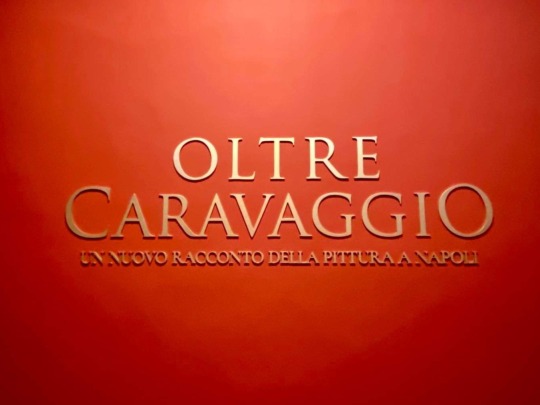

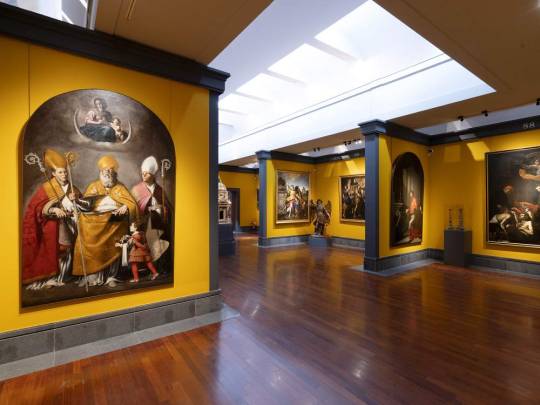

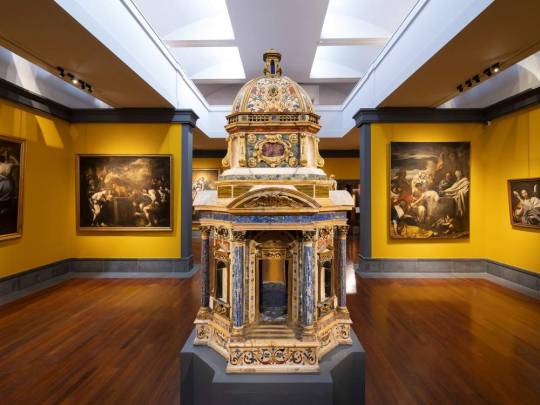



Oltre Caravaggio. Un nuovo racconto della pittura a Napoli (31 marzo 2022 - 7 gennaio 2023), Museo Nazionale di Capodimonte, Napoli.
#caravaggio#battistello caracciolo#luca giordano#jusepe de ribera#mattia preti#artemisia gentileschi#domenichino#massimo stanzione#napoli#naples#art history#seicento#17th century#naturalismo#caravaggismo#barocco#baroque#art#art exhibition#capodimonte#francesco solimena#andrea vaccaro#pacecco de rosa#filippo vitale
207 notes
·
View notes